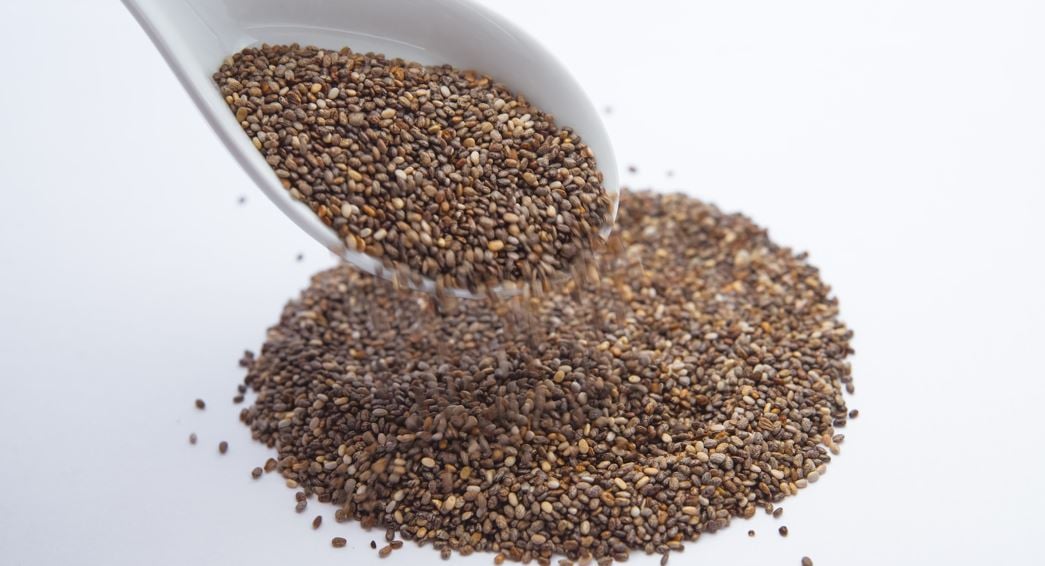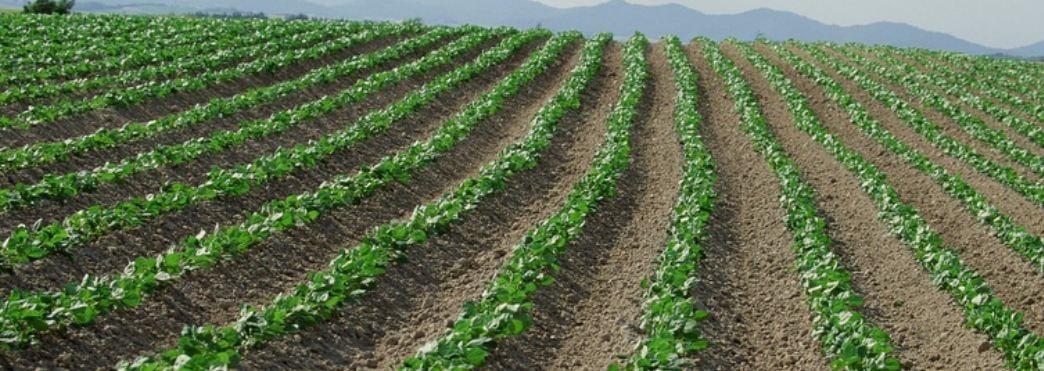How to Start A Profitable Chia Seeds Farming Business

The health advantages of chia seeds are causing them to gain in popularity. These tiny seeds can be quickly grown in your garden, producing abundant, nutritious food.
You can enhance the nutritional value of various foods, such as soup and bread, by including these tiny seeds. The demand for chia is increasing due to its numerous health benefits.
10 Ways How to Start A Profitable Chia Seeds Farming Business
To start a profitable chia seeds farming business, you must conduct thorough research and plan accordingly. Growing the crops in an appropriate spot, taking care of them, and eventually selling them to local shops, health food stores, or online is a viable business choice.
In this blog post, we'll cover the basics of starting a chia seeds farming business and how to procure the right equipment.
1. Conduct market research:
Investing in chia seed farming can be a lucrative business opportunity, but doing your research first is essential. Before you commit to the venture, ensure you understand the demand for chia seeds in your target market.
Before investing your resources, ensure that you conduct careful research and confirm that there is a solid potential customer base for your product or service. This technique guarantees the highest farming revenue.
In conducting thorough market research, you should identify potential buyers, understand their preferences and needs, and analyze the competition. You can also look for opportunities to add value to your chia seeds by offering organic or fair trade products.
2. Invest in high-quality seeds and equipment:
Investing in high-quality chia seeds and farming tools is essential for any farmer looking to achieve a successful harvest. Reliable irrigation systems, tractors, and other agricultural equipment ensure crops receive the proper water and nutrients for optimal growth.
Investing in these items can make all the difference when reaping a bountiful harvest. You should also choose seeds adapted to your climate and soil type and ensure they're certified and contaminants-free.
If your goal is to cultivate chia seeds professionally, then having specific tools and machines is necessary:
(a). Tractor:
Regarding tractors, you can only call yourself a farmer with one. Tractors find application in moving crops and other objects on farms as well.
(b). Seed Drill:
You'll need a seed drill to plant chia seeds at home. Growing chia seeds requires you to place them in the soil at a distance of 1-2 inches apart and 2-3 inches deep. At the outset, you must gather dirt, water, and fertilizer.
(c). Irrigation System:
Chia seeds are easy-to-grow, hardy plants that can thrive in various climates. These annuals require only four hours of sunlight and up to 12 inches of weekly rainfall.
Consistent watering is crucial when cultivating plants, regardless of the type of soil you're using. Chia seeds thrive when watered and fertilized regularly, but they need a drip irrigation system to ensure the plants receive the required water.
(d). Harvesting Equipment:
Chia seeds are a healthy and versatile food used for cooking, baking, or even as an egg substitute. There are many different varieties of chia seeds, such as flour, whole, and ground seeds.
After the chia seeds mature, they need to be harvested and processed. You can use a combine harvester or a reaper binder to harvest chia plants.
(e). Drying Equipment:
For the most part, people tend to think of chia seeds as a healthy food meant for endurance and high-energy athletes.
However, you can also use them in other ways that take advantage of their nutritional content. One such method is using them instead of eggs when baking due to their high protein content and ability to create moist baked goods without using butter or milk.
(f). Weighing Scales:
With the growing demand for chia seed foods, you will need scales to weigh the seeds during harvest and packaging, which ensures accurate measurements and pricing.
(g). Packaging Materials:
Chia seeds are a unique and versatile product you can package in various sizes and materials. You can eat them, use them for aesthetic purposes, and incorporate them into remedies.
The product is available in powder, flour, and meal form, which you can dissolve in water without any chemicals for preservation.
(h). Storage Containers:
Chia seeds are a fantastic superfood that comes with a lot of health benefits. You can also use them in various ways, such as ground up to make porridge and add to smoothies. After drying them, they need to be stored in air-tight containers so they don'tdon't lose their nutritional value over time.
3. Determine your niche:
Chia seeds are a popular food item. Recently, you can eat these seeds in their raw form and in the form of vegetable chia puddings. Depending on the farmer's goals, there are several ways to farm and grow these seeds.
Organic farming minimizes chemicals and pesticides, while hydroponic agriculture maximizes production yield with minimal effort. Conventional farming maximizes profit by utilizing high-tech machinery and trade practices.
4. Devise a strategy for your business:
Success in entrepreneurship requires a well-thought-out plan for the business. This instrument assists in setting targets, establishing financial constraints, and offers other beneficial guidance. A well-structured business plan allows you to evaluate your progress and make necessary adjustments.
5. Choose the right location and land:
Chia seeds are renowned for their nutritional value, and they can be grown in various climates if you follow proper guidelines. These seeds require warm, dry temperatures with well-drained, nutrient-rich soil to thrive and produce a healthy yield of these highly sought-after superfoods.
Cultivating chia seeds can be a gratifying experience for any gardener. You should choose a location that meets these requirements and has access to irrigation and other necessary resources.
6. Obtain the necessary permits and licenses:
Starting a chia seed farming business can be rewarding but requires some preparation. Depending on the location of your farm, you may need to obtain permits and licenses to manage the farm.
This process can involve multiple steps, such as registering with the local government, obtaining land use permission, and complying with all applicable regulations. New businesses must obtain proper permissions and licenses to comply with rules and regulations.
It includes registering your business, obtaining a land use permit, and complying with environmental regulations. You should consult with local authorities to ensure you meet all the qualifications.
7. Sowing and Harvesting:
Using chia seeds, you can conveniently plant various plants in your garden. There are two ways to plant the seeds in your garden - by broadcasting or using a precision drill.
The magnitude of your garden determines the answer to the question. The timing of planting chia seeds varies by region, but it typically occurs during a specific time of year.
Chia seeds can mature for 90 to 120 days, depending on the variety. As the plant grows, it develops small white or purple flower clusters, eventually turning into seed pods. The optimal time for picking chia seeds is when their pods turn brown and are dry
8. Implement sustainable farming practices:
Growing chia seeds without damaging the environment are gaining favor among many individuals. As the demand for organic and regenerative farming practices rises, chia seeds offer an excellent opportunity to farmers.
By using natural fertilizers and pest control methods, rotating crops, and conserving water resources, farmers can grow chia seeds with minimal environmental impact. Chia seeds are a rich source of many significant vitamins and minerals that positively affect your well-being.
With its sustainability credentials and nutritional profile, chia seeds quickly become the go-to choice for many health-conscious individuals worldwide. Using farming techniques that benefit the environment can result in healthier chia seeds for consumption.
9. Create a marketing strategy:
Grow ng chia seeds can be lucrative if you know how to find the right buyers. With the right strategy, you can quickly garner the chia seeds and find buyers willing to pay top dollar.
Knowing where to look and what to look for is crucial in finding buyers t at will ensure that you profit from your hard work. You can sell your chia seeds to health food stores, supermarkets, and online retailers.
You can also create your brand and sell your chia seeds directly to consumers through your website or at farmers' markets. To attract buyers, you should develop a marketing strategy that includes branding, packaging, pricing, and promotions. It would help if you also built relationships with potential buyers and provided excellent customer service.
10. Monitor and evaluate your performance:
Chia seed farming is a lucrative business that requires attention and dedication to ensure success. To maintain your performance, you must monitor and evaluate your yields, sales, expenses, and profits.
It will help you identify areas for improvement and make the necessary changes to maximize profits. Monitoring your progress can enable you to evaluate whether everything is on track or if there are potential problems in the future.
With regular monitoring and evaluation of your chia seed farming business, you can ensure that it continues to be successful. You should also stay up-to-date with the latest trends and innovations in the chia seed industry and adapt your business accordingly.
In conclusion, Chia seeds are the most popular in most countries because you can eat them raw or cooked food and offer health benefits. Foods containing omega-3 fatty acids, protein, fiber, and antioxidants benefit health.
Vegans and vegetarians can benefit from these foods as they provide essential nutrients. With diligence and dedication, cultivating chia seeds can be a fulfilling occupation. You can also help people stay healthy by selling them your crop.




